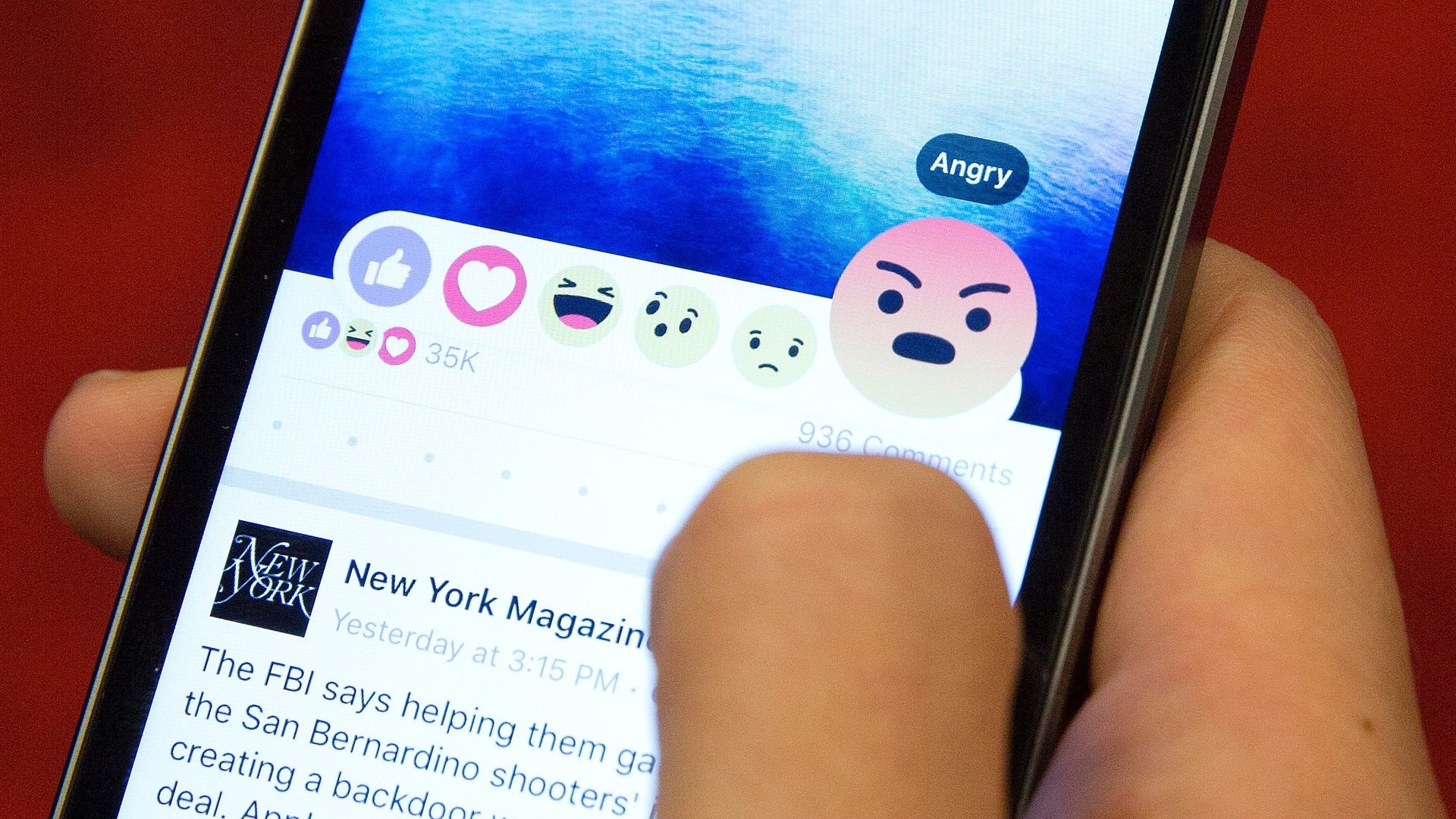Good news for Facebook, bad news for the world
Facebook’s emoji reactions, which initially failed to impress after its February release, are starting to gain in popularity.


Facebook’s emoji reactions, which initially failed to impress after its February release, are starting to gain in popularity.
Throughout May and June this year, social-media analytics firm Quintly analyzed 105,000 Facebook pages and tracked the use of emoji reactions. The original “like” button is still the predominant form of expression, comprising 92% of emoji reactions, but it’s seeing a gradual decline, about 1% over the two month-period, according to the research. Overall, the number of reactions went up by 22.4% from May to June. Each individual reaction jumped up by at least 16% in the two months.
A closer look at Facebook’s success with emoji reactions provides a lens into a more grim reality: The fastest-growing reaction was the sad (😢) emoji, which reported a 48% uptick in use. The gloom was likely in response to the bad news, such as the Orlando mass shooting and the Istanbul airport attack killing 42, that took place during the course of the study.
These events illustrate the very motivation behind emoji reactions. Because people don’t necessarily want to “like” stories about tragic news events, Facebook CEO Mark Zuckerbreg said he wanted to give users better tools to express themselves. He later revealed to investors that he was also worried users would stop sharing content if they felt uncomfortable liking a status or story.
The reactions are also helping people express positivity. The study found that the “love” (❤️) and “haha” (😆) emoji are used more than 70% of the time, which shows that positive content stirs more emotions.
It’s possible brands and businesses could in the future tap into these emotional responses, which sit somewhere between a quick like and more thoughtful comments. Posting content that triggers users to feel a range of emotion—happiness, sadness, anger, surprise—could give companies better insights into how their content is perceived by the public.